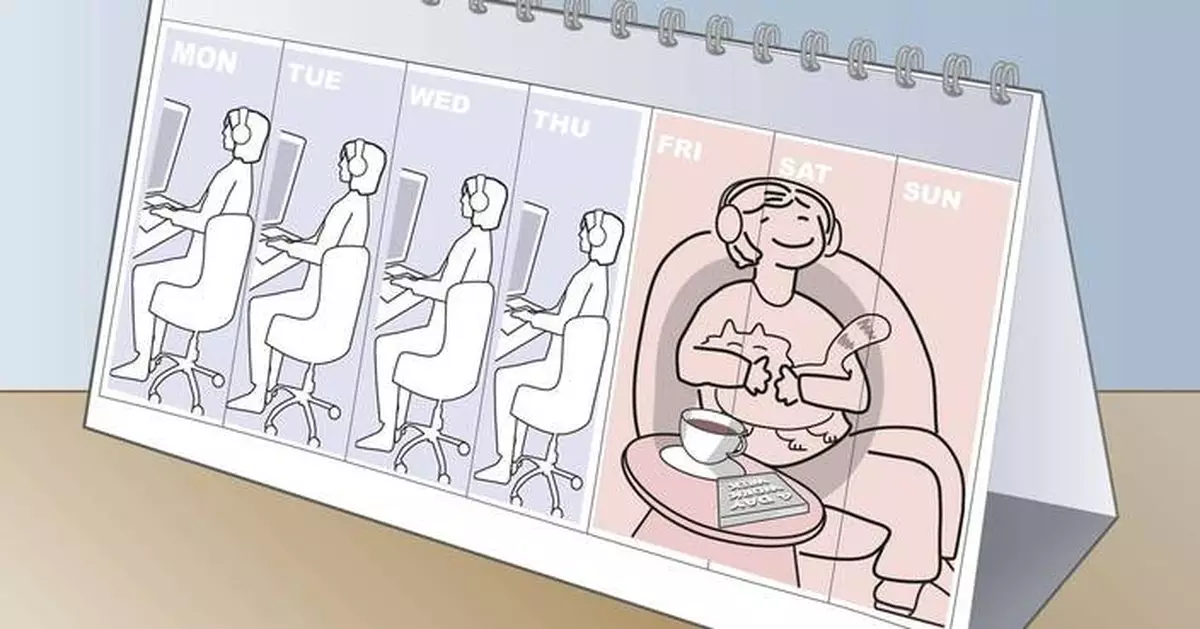Companies exploring the option of letting employees work four days a week hope to reduce job burnout and retain talent seeking a better work-life balance, according to the chief executive of an organization that promotes the idea.
The trend is gaining traction in Australia and Europe, says Dale Whelehan, CEO of 4 Day Week Global, which coaches companies through the months-long process of shortening their employees’ work hours. Japan launched a campaign in August encouraging employers to trim work schedules to four days.
American companies haven’t adopted four-day weeks as broadly, but that could change. Eight percent of full-time employees polled by Gallup in 2022 said they work four days a week, up from 5% in 2020.
The Associated Press spoke with Whelehan about the reasons why companies might want to consider the change. His comments have been edited for length and clarity.
A: The bigger question is, why shouldn’t they? There’s a lot of evidence to suggest we need to do something fundamentally different in the way we work. We have issues of burnout. We have a recruitment and retention crisis in many industries. We have increased stress within our workforce, leading to health issues, issues with work-life balance, work-family conflict. We have people sitting in cars for long periods, contributing to a climate crisis. We have certain parts of the population that are able to work longer hours and therefore be rewarded for that, creating further inequity within our societies. Lastly, we look at the implications that stress actually has on long-term health. We know that it’s linked to issues like cardiovascular disease, to cancer, to diabetes. So stress is something not to be taken lightly, and it’s only rising in our world of work.
To understand where we are now, let’s take a step back into pre-industrial times. My granddad was a farmer, worked seven days a week and was required on-site all the time. It was a lot of long hours, but also he had a lot of autonomy.
By the time my dad entered the workforce, he was a technician in a mechanical role. And he was expected to produce products on a large scale. As a result he wasn’t given the rewards from farming, but was given a salary. That change from my grandfather’s time to my dad’s brought about the birth of a discipline known as management. And management, led by Frederick Taylor, was looking at the relationship between fatigue and performance. A lot of scientific studies were done to try to understand that relationship, leading to the need for a five-day week as opposed to a six-day week. By the time I entered into the workforce, we no longer had a very physical, laborious workforce. It's highly cognitive and highly emotional.
The fundamental physiological difference is that our brain as a muscle can’t withstand the same level of hours of work as our muscles in our body might be able to. So it’s that mismatch between an outdated work structure of 40 hours, rooted in very physical labor, and what is now a highly cognitive workforce.
A: The reduction of working time brings about productivity gains by people having naturally more time to rest and recover, allowing them to come back into a new week more engaged and well-rested. That’s one way in which you see productivity gains. The second is the fundamental shift that organizations undergo while transitioning to a four-day week.
When we work with organizations, we use what’s called a 100-80-100 principle. So 100% pay for 80% time for 100% output. We ask organizations to design their trials in that sort of philosophy: How can you keep your business at the same level or improve while working less? The fundamental change we see is, let’s move away from thinking about productivity as how much time it takes to get something done, versus focusing on what outcomes we know drive businesses forward.
A: Disproportionately high amounts of part-time workers are female. As a result, women typically take a reduction in pay. That’s despite the fact that, based on the evidence that we’ve seen in trials, those part-time workers are producing the same output as their five-day-week counterparts.
In four-day week trials, everyone embarks on the journey. So we see men taking on greater levels of responsibilities in household or parenting responsibilities.
The alternative situation is women take part-time work, reduce their pay. Men have to work longer hours at a higher salaries and more stressful jobs in order to make up the deficit. ... It just creates this vicious cycle.
A: Meetings. We are addicted to meetings. It’s just gotten worse and worse since the pandemic. I think a lot of that comes from a culture of indecisiveness. There’s a sense of not wanting to make decisions, and therefore delaying the process or involving many people in the process so that everyone has a responsibility, and thus no one has responsibility. And that is not good when it comes to the greater issue of productivity.

(AP Illustration/Jenni Sohn)















